Péterfy Sándor Street is named after a person who was already called the "Father of teachers" during his own life, and this epithet was also immortalised in periodical articles. Sándor Péterfy moved to Pest in 1865 (one year after the loss of his wife and only child) to devote his life to his profession - education - and to help his colleagues prosper. He was one of the key people in the organisation of education during the Dualism era: in addition to being a class teacher and then principal at the Deák Square Lutheran elementary school, he also edited several magazines (e.g. Népnevelők lapja), published in many newspapers, and wrote textbooks as well.
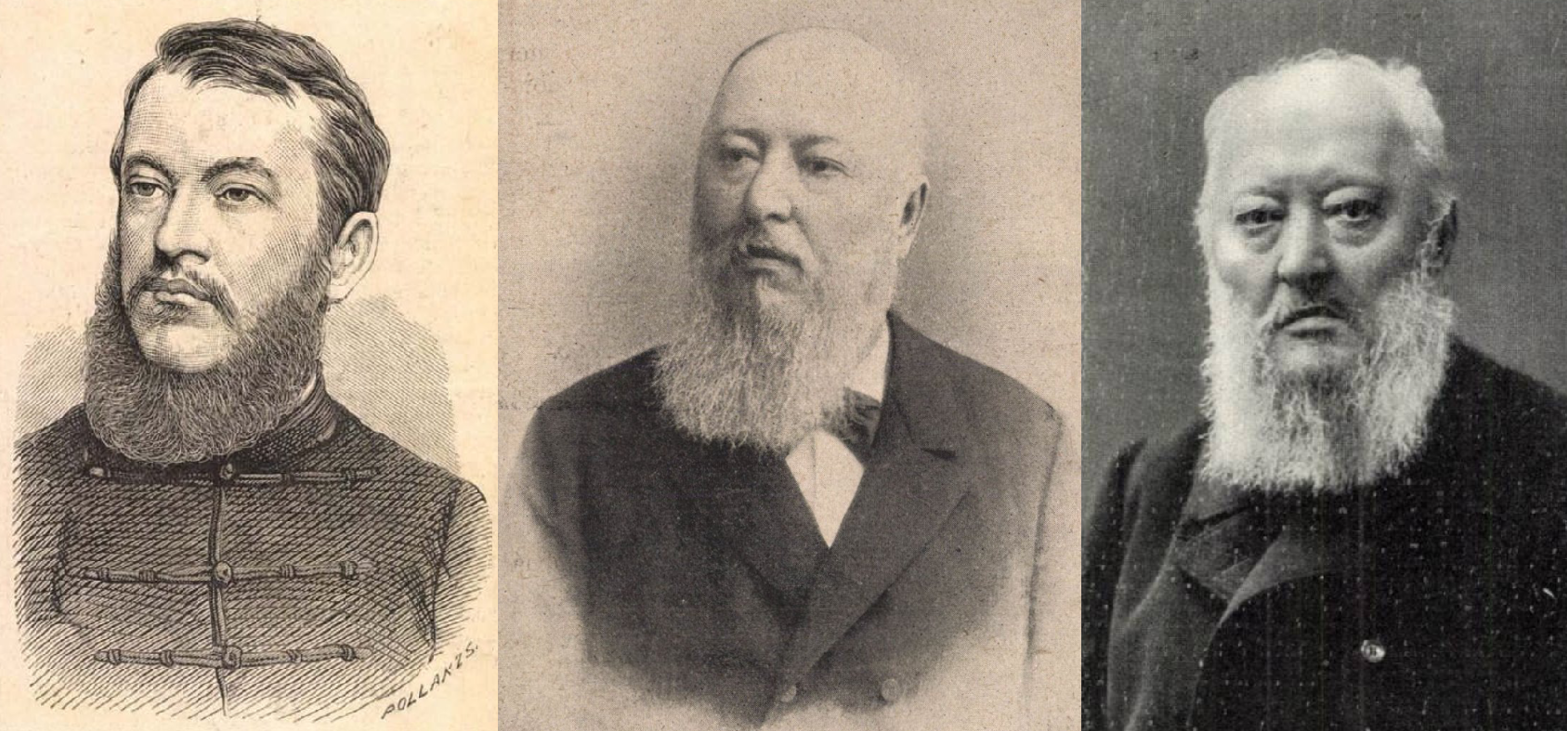
Portraits of Sándor Péterfy over time: (left) from the 34th Issue of 1878 of Vasárnapi Ujság; (in the middle) from the 28th Issue of 1896 of the Néptanítók lapja; (right) and from the 34th Issue of Vasárnapi Ujság of 1913 (Source: Arcanum)
In the 1870s, he initiated the creation of the Eötvös Foundation, which became a self-help and advocacy association for the country's teachers. The organisation was a support for many poorer teachers and their families, but it also served other charitable purposes. Péterfy died in 1913, and a year later the street where he lived was named after him. This is how Óvoda Street in Erzsébetváros became Péterfy Sándor Street.
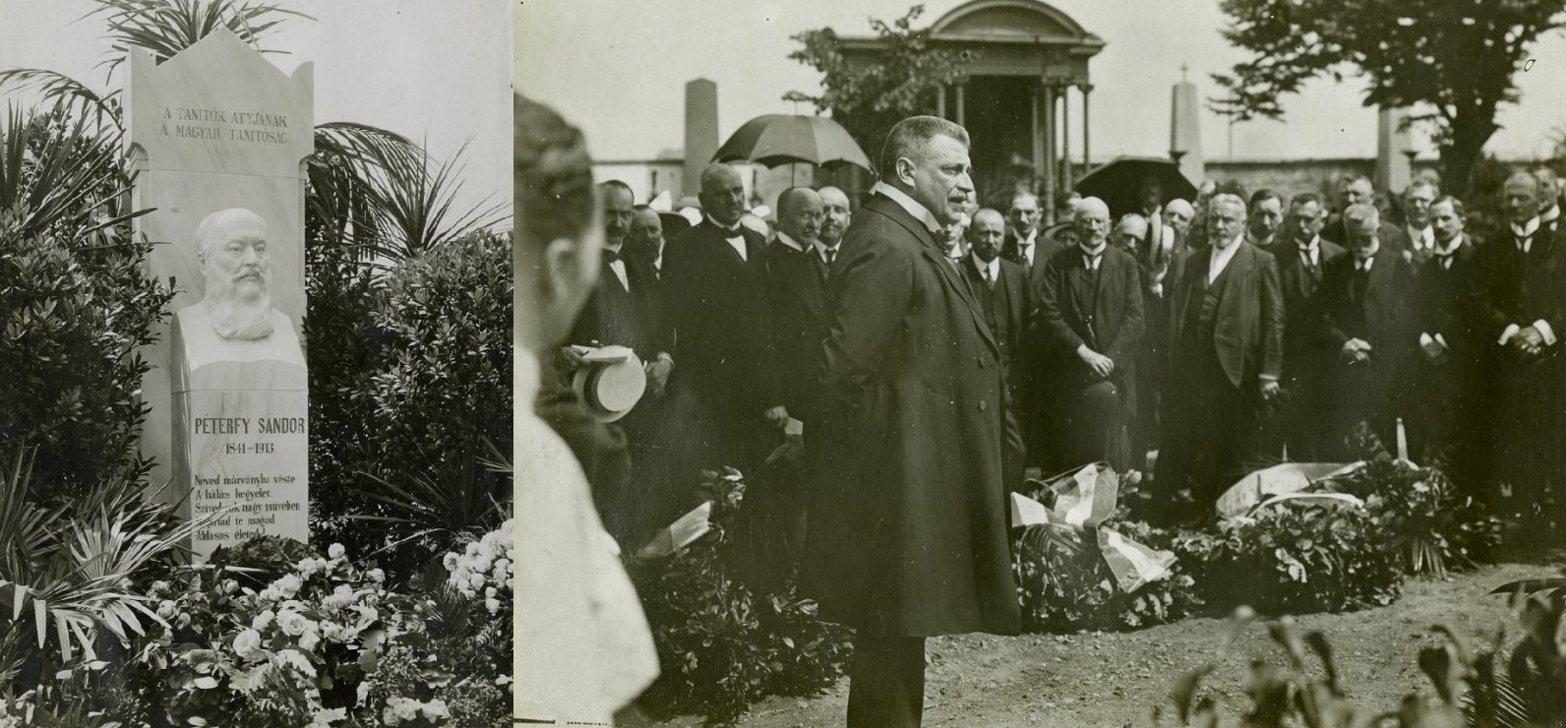
Sándor Péterfy received an ornamental grave in 1917 (left) in the Fiumei Road National Cemetery. On the occasion of the inauguration, the mayor of Budapest at the time, István Bárczy, gave a speech (right) (Source of images: FSZEK/Budapest Archives)
Péterfy Sándor Street is largely located in the quarter known colloquially as Csikágó [Chicago, written as it is pronounced in Hungarian]. This is today's quarter bounded by Dózsa György Road, Thököly Road, Rottenbiller Street and Damjanich Street. There are two assumptions about the origin of the name: according to one, this neighbourhood was built up so quickly from scratch, the like of which could only be seen in big cities in the United States at the time - and it was indeed one of the fastest growing and populous areas of Budapest at the end of the 19th century. According to the other assumption (similar to the American Chicago), the neighbourhood was characterised by deplorable public safety.
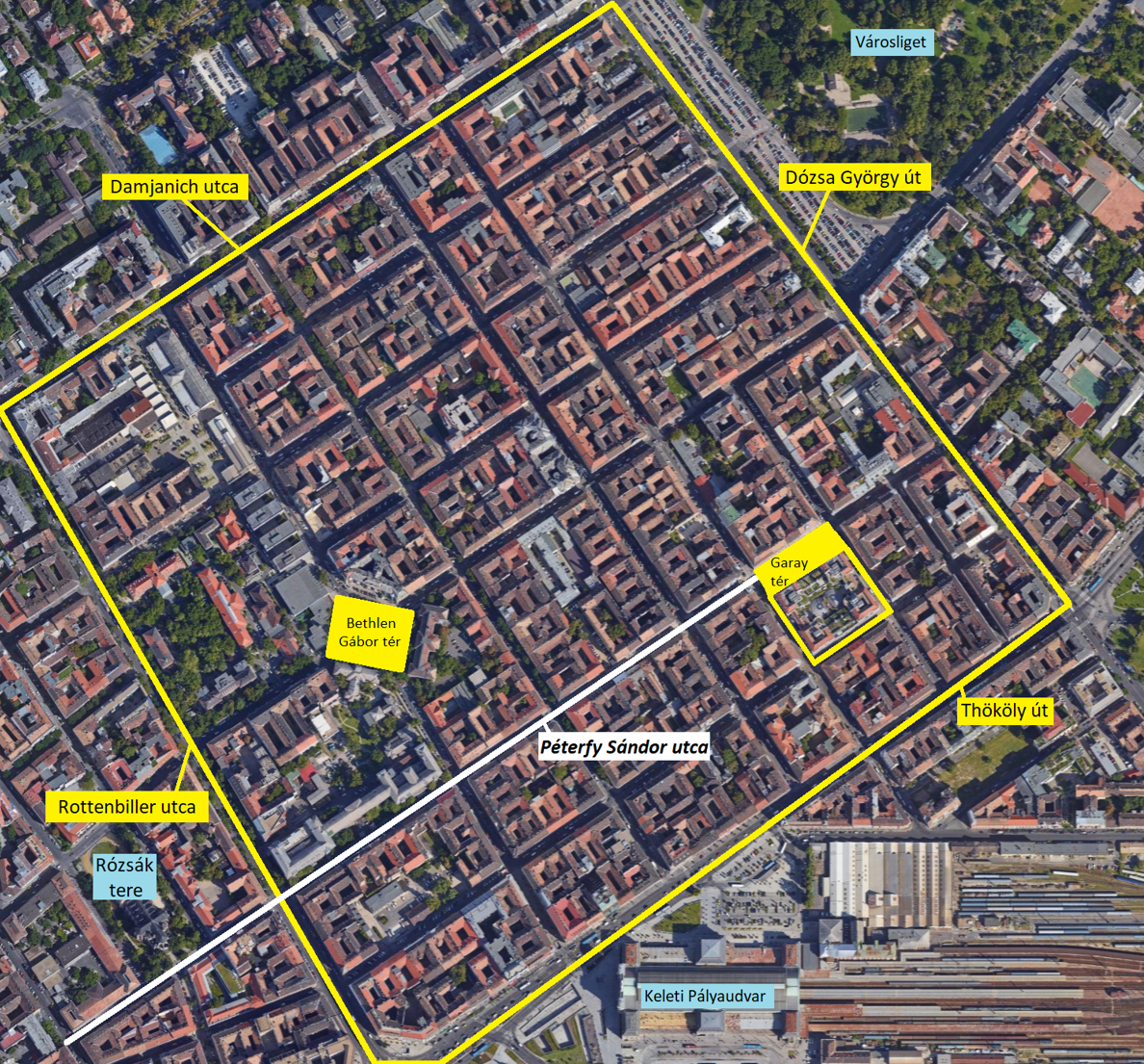
Csikágó's rectangular, densely built-up quarter in Külső-Erzsébetváros: its four border streets and two public squares are marked in yellow. The line of Péterfy Sándor Street is marked in white (Source: Google Earth)
Csikágó, including Péterfy Sándor Street, is one of the lesser-known features of Budapest's architectural heritage: its residential buildings do not for the most part reflect the splendour that characterises the inner-city rental palaces, but the decoration of many facades and inner courtyards reveals similar solutions.
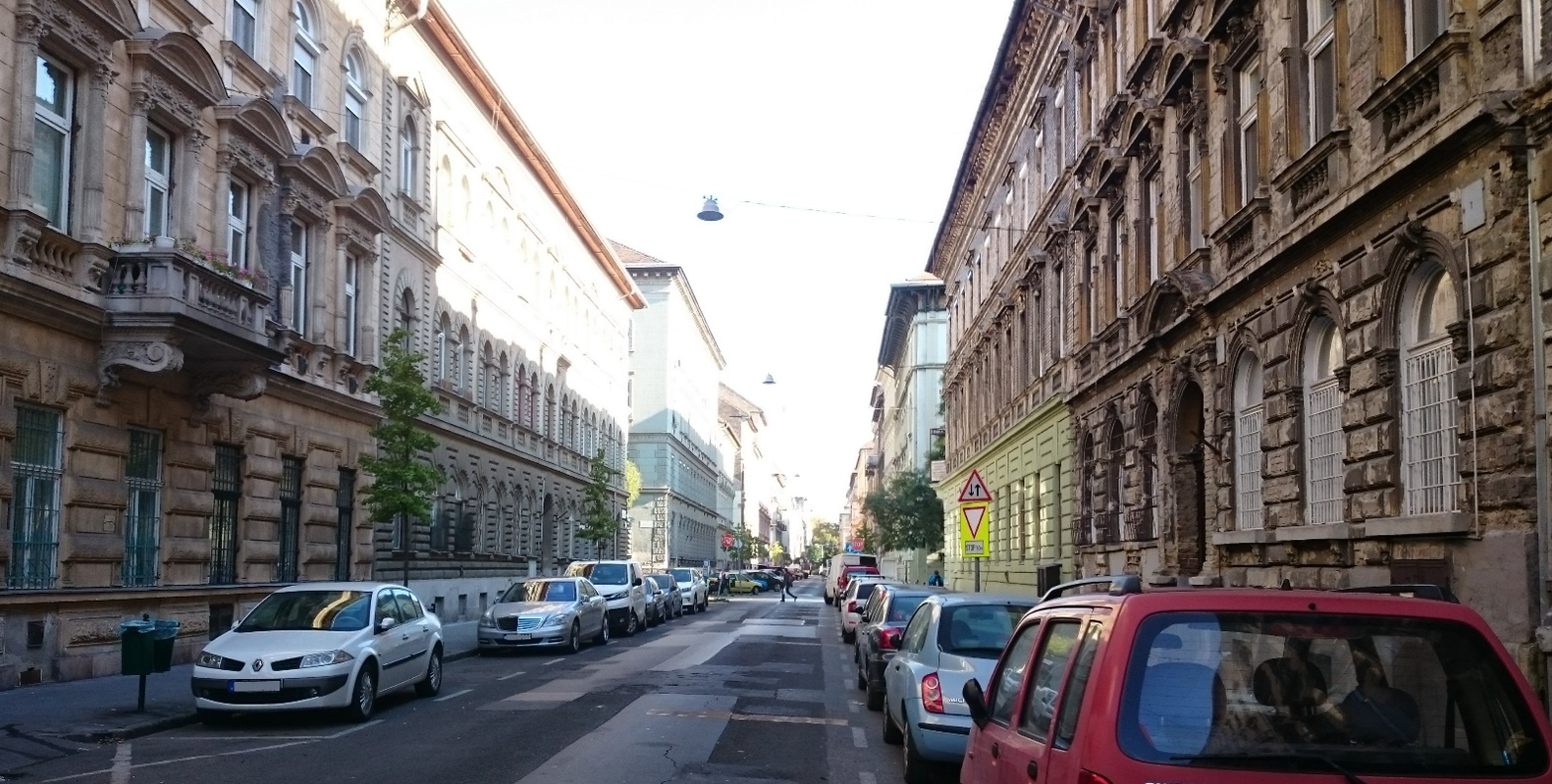
A familiar "Csikágó" scenery in Péterfy Sándor Street: an alternation of well-kept and neglected Dualism-era buildings, narrow pavements, patched-up roads - the decoration of the facades bears the hallmarks of the era (Photo: Dávid Mészáros/pestbuda.hu)
This place is the empire of turn-of-the-century houses with hanging corridors: balcony-like circular corridors snake above the inner courtyards, bordered by cast iron protective railings. These corridors lead to the entrances of the apartments on the upper floors, but this is also where the residents of the house used to converse with each other. Many local residential buildings were left to decay for decades, which did not spare the plaster either. The more fortunate ones have since been restored, but even the majority of the neglected houses are still standing - only a few have been demolished since the Monarchy.
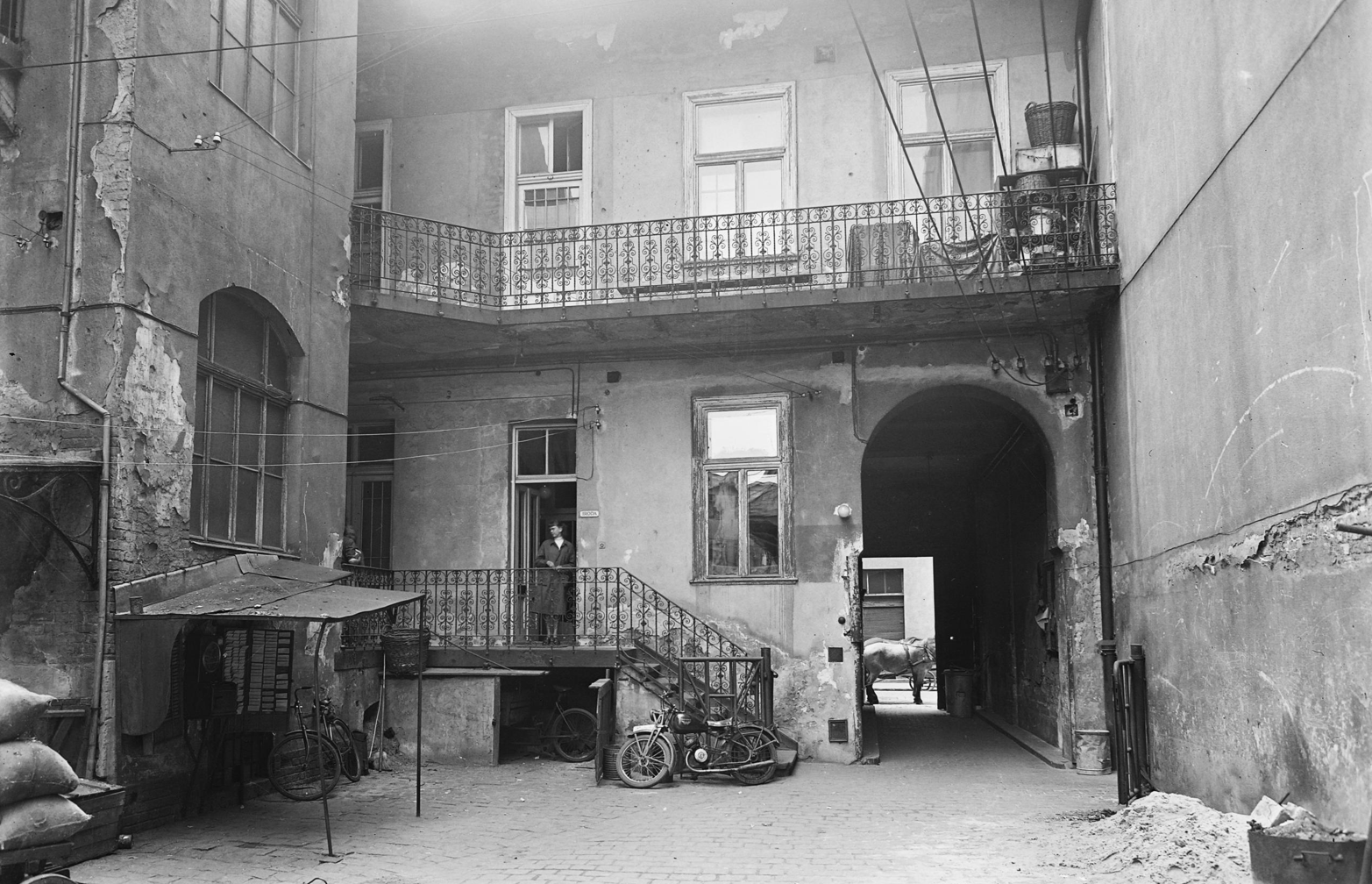
34 Péterfy Sándor Street, seen from its inner courtyard, did not escape the judgement of history - it was demolished in the 2000s. The eponymous Péterfy Sándor lived in the opposite house at 41. Photo from 1957 (Source: Fortepan/Uvaterv)
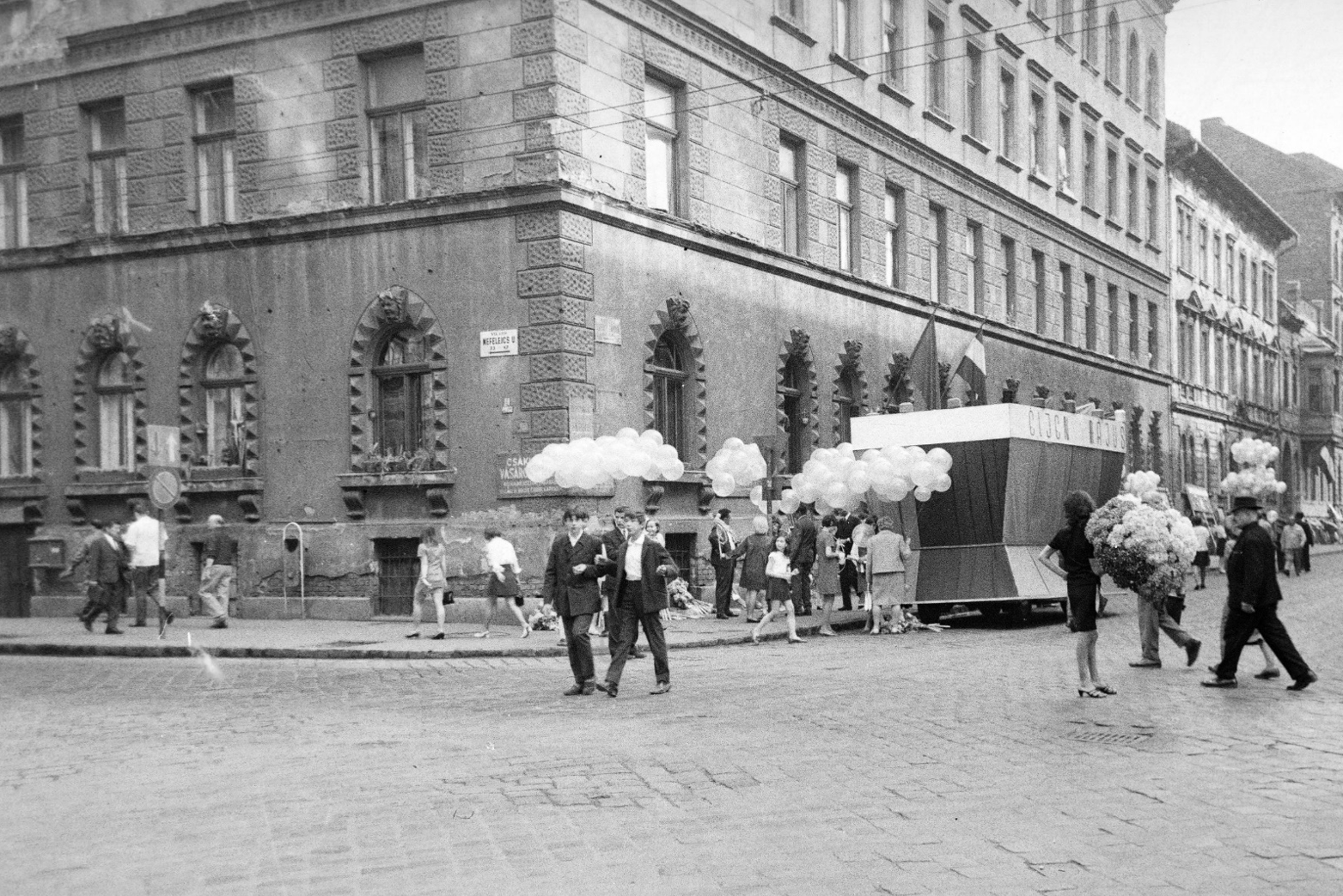
View of life at the corner of Péterfy Sándor Street and Nefelejcs Street: people preparing for a parade with balloons and flowers on the cobblestone road on 1 May 1969 (Source: Fortepan)
The best-known establishment on the street is the main building of the Péterfy Hospital. The institution was originally built as the Private Employees' Insurance Institute's [Magánalkalmazottak Biztosító Intézete - MABI] hospital. It was completed in 1934 according to the plans of architect Dr Dezső Hültl.
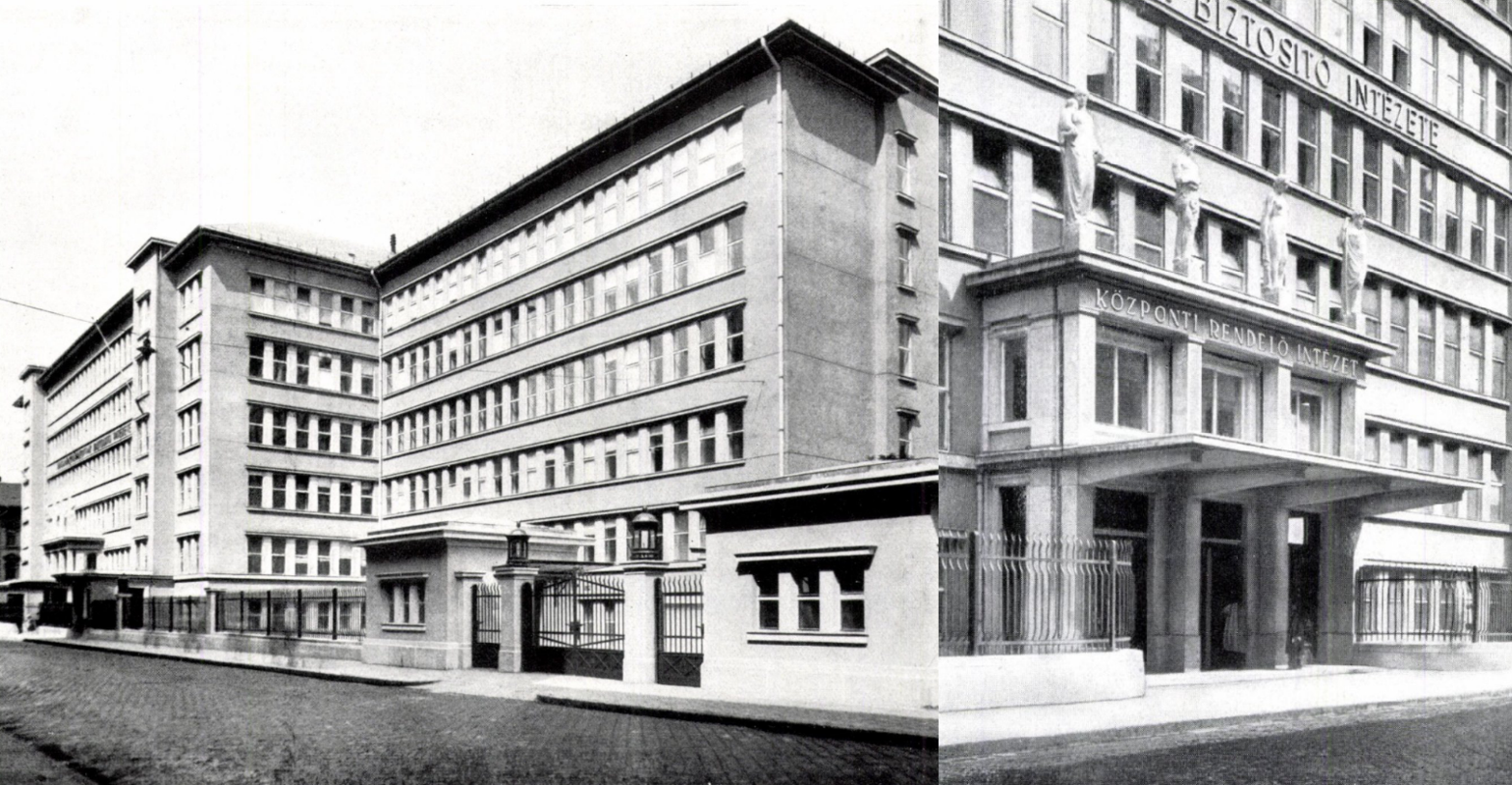
Photographs of the completed MABI hospital (today's Péterfy Sándor Street Hospital) (left) and its main entrance (right) in the July 1934 issue of Tér és Forma (Source: Arcanum)
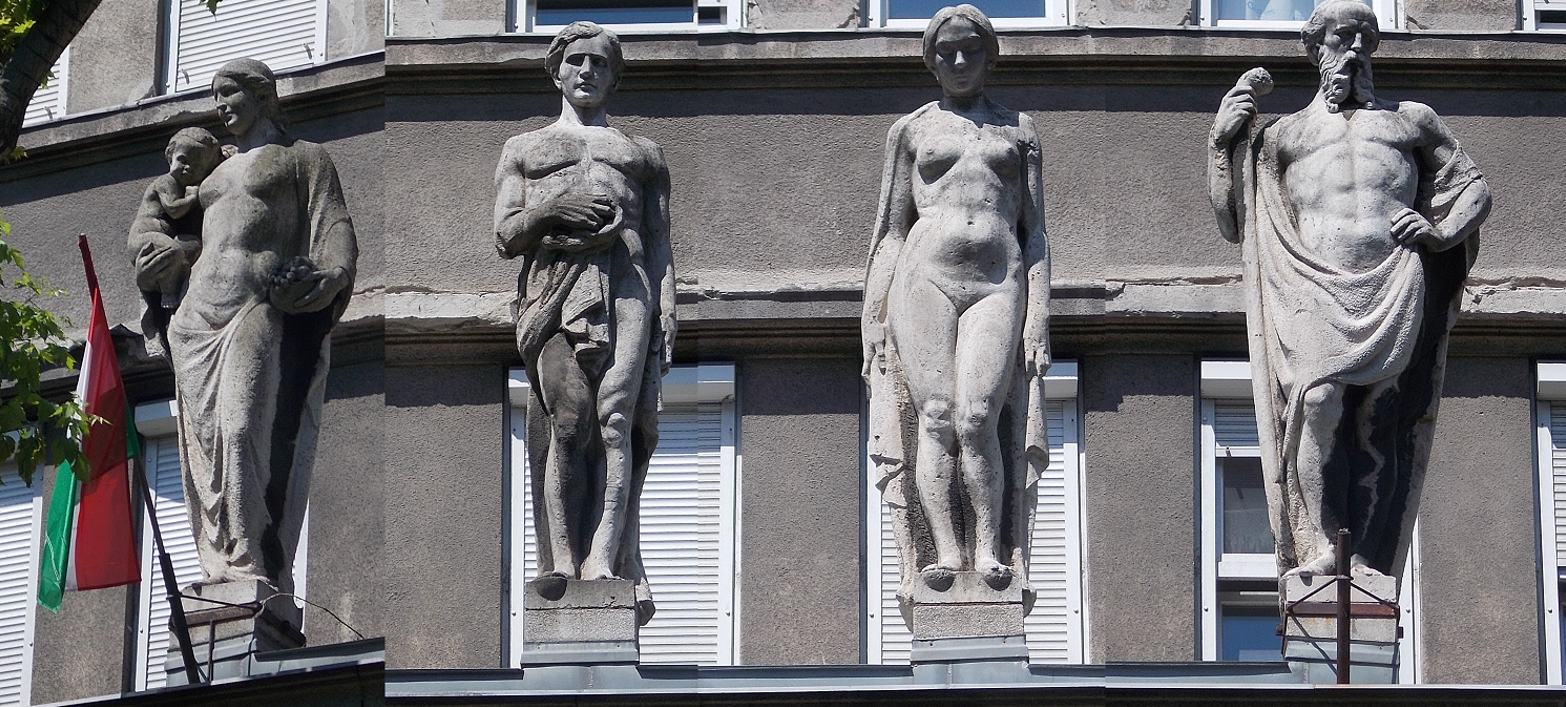
A closer look at the four marble statues above the main entrance (Source: Wikimedia Commons)
Later, between 1940 and 1942, the building was expanded with the construction of the headquarters of MABI - it was no longer designed by Dezső Hültl, but by Lajos Hidasi, yet the person walking down the street can get the impression that the two buildings are twins.
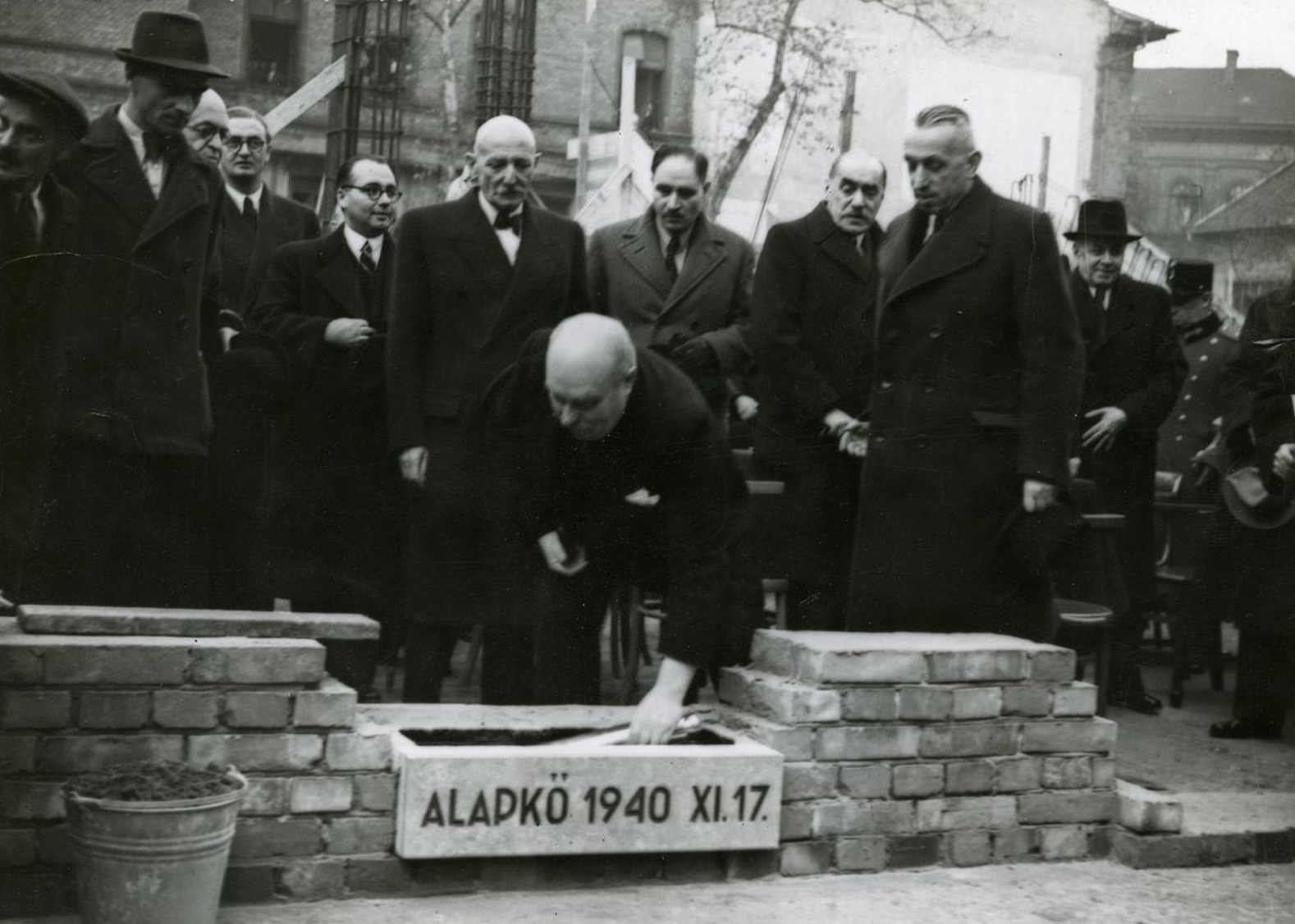
Dr István Zsembery, the president of MABI, places the founding document at the laying of the foundation stone of the MABI headquarters on 17 November 1940 (Source: FSZEK/Budapest Archives)
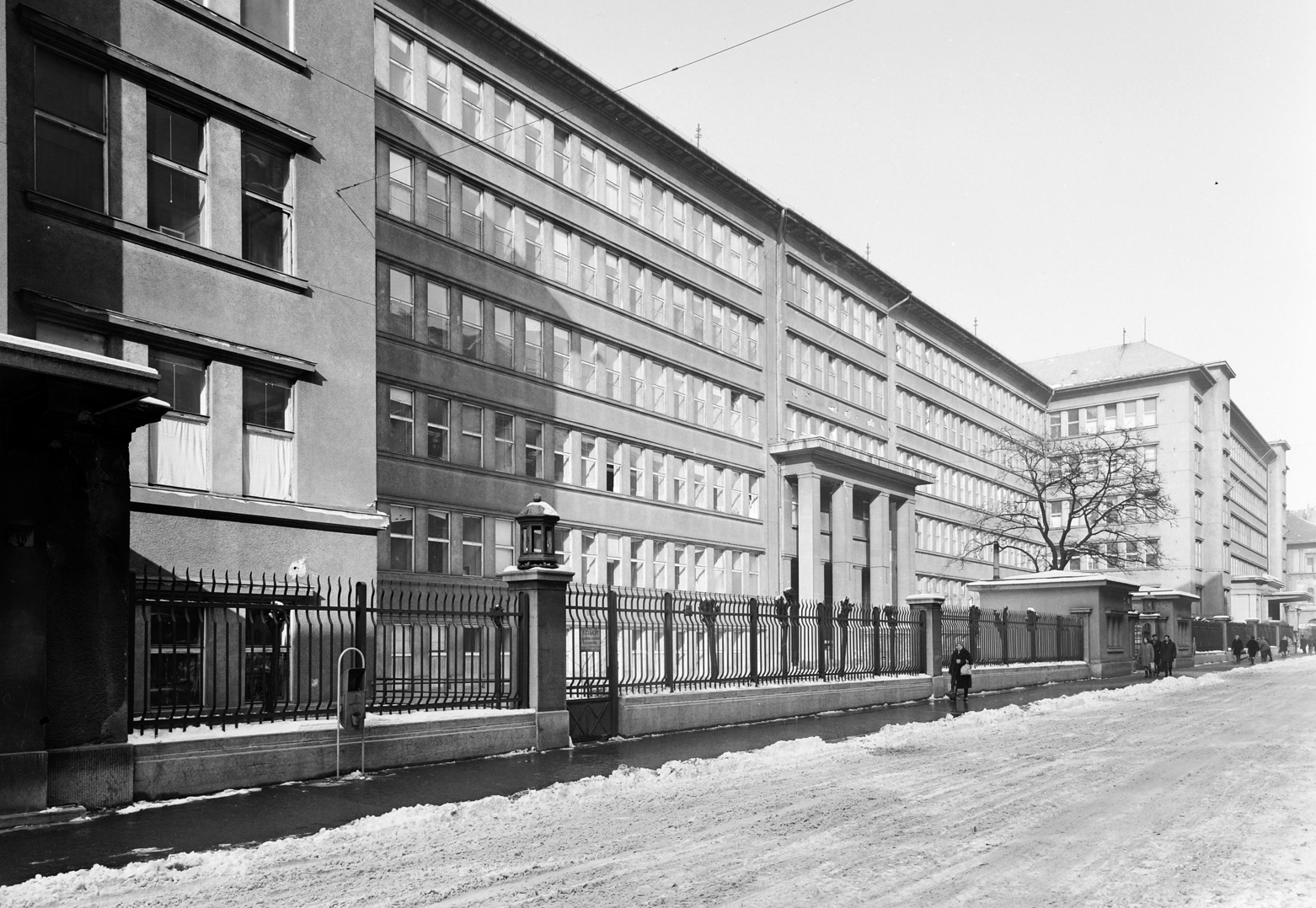
The building complex extended with the MABI headquarters (far right) in a picture from 1969 (Source: Fortepan/Main Photo)
During the 1956 revolution, it was considered one of the most modernly equipped hospitals in the capital. One of the insurgents' resistance centres was here, and Ilona Tóth, who was later martyred, also worked here.
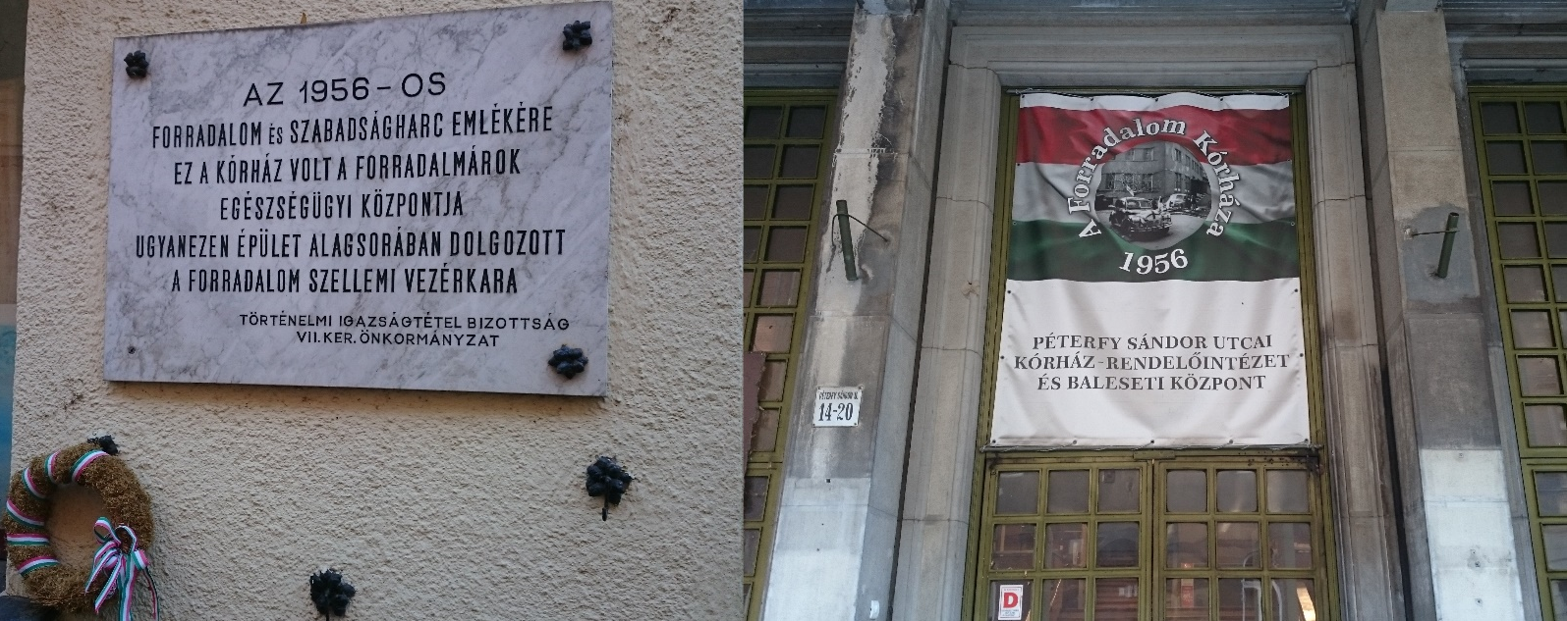
The hospital of the revolution: plaque next to the car entrance and poster above the entrance door (Photo: Dávid Mészáros/pestbuda.hu)
Péterfy Sándor Street is the only street in the Csikágó quarter that continues beyond the boundaries of the quarter, towards the inner parts of Erzsébetváros. Here stands the building that gave the street its previous name (Óvoda Street), the former State Kindergarten Teacher Training Institute.
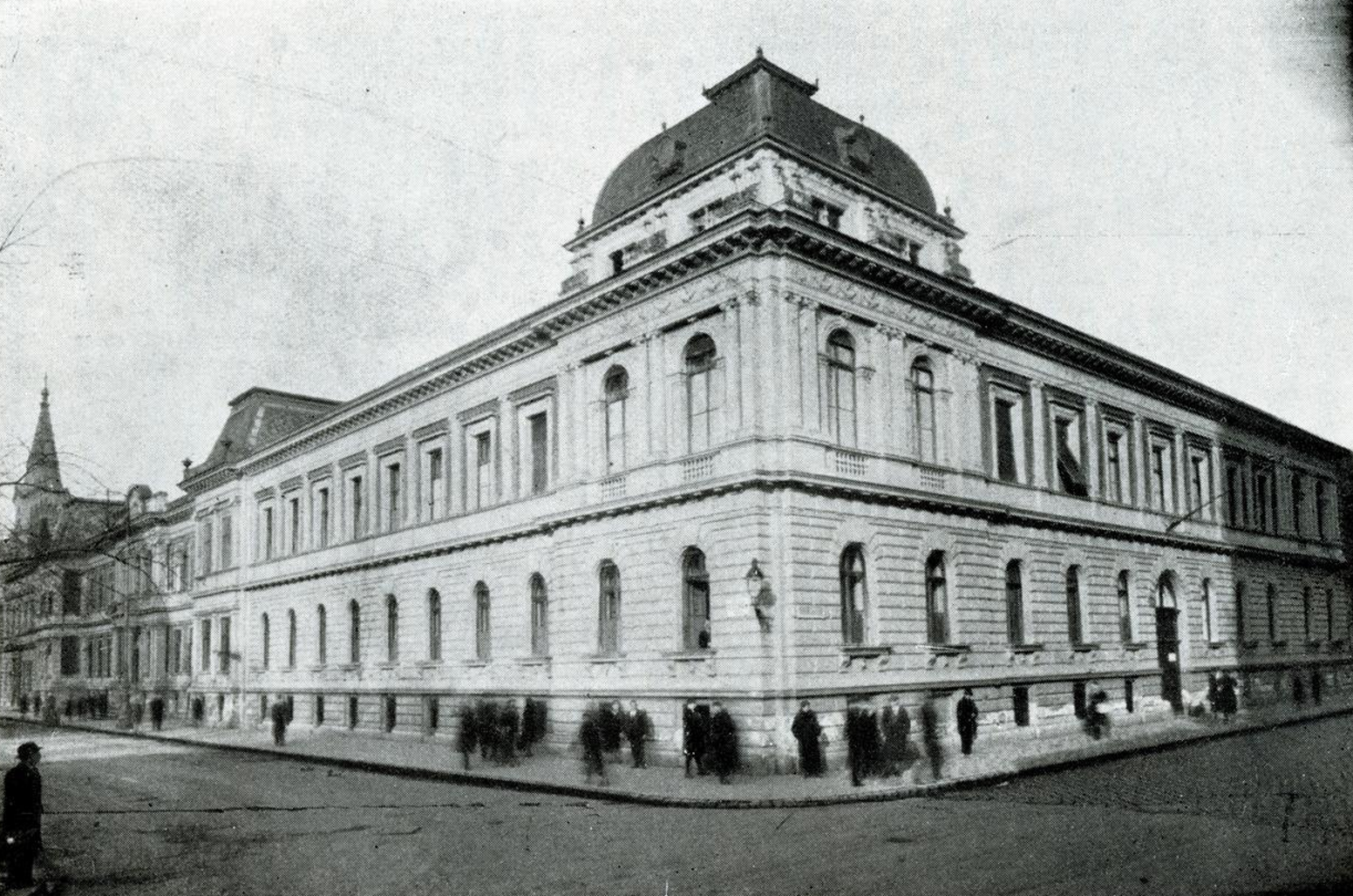
The kindergarten teacher training institute in 1940 at the intersection of Rózsák Square (left) and Péterfy Sándor Street (right) (Source: FSZEK/Budapest Archives)
The building was completed in 1876 based on the design work of József Pucher and operated according to its original purpose until 1952. Today, it houses a kindergarten, a primary school, a high school and a student home as well.
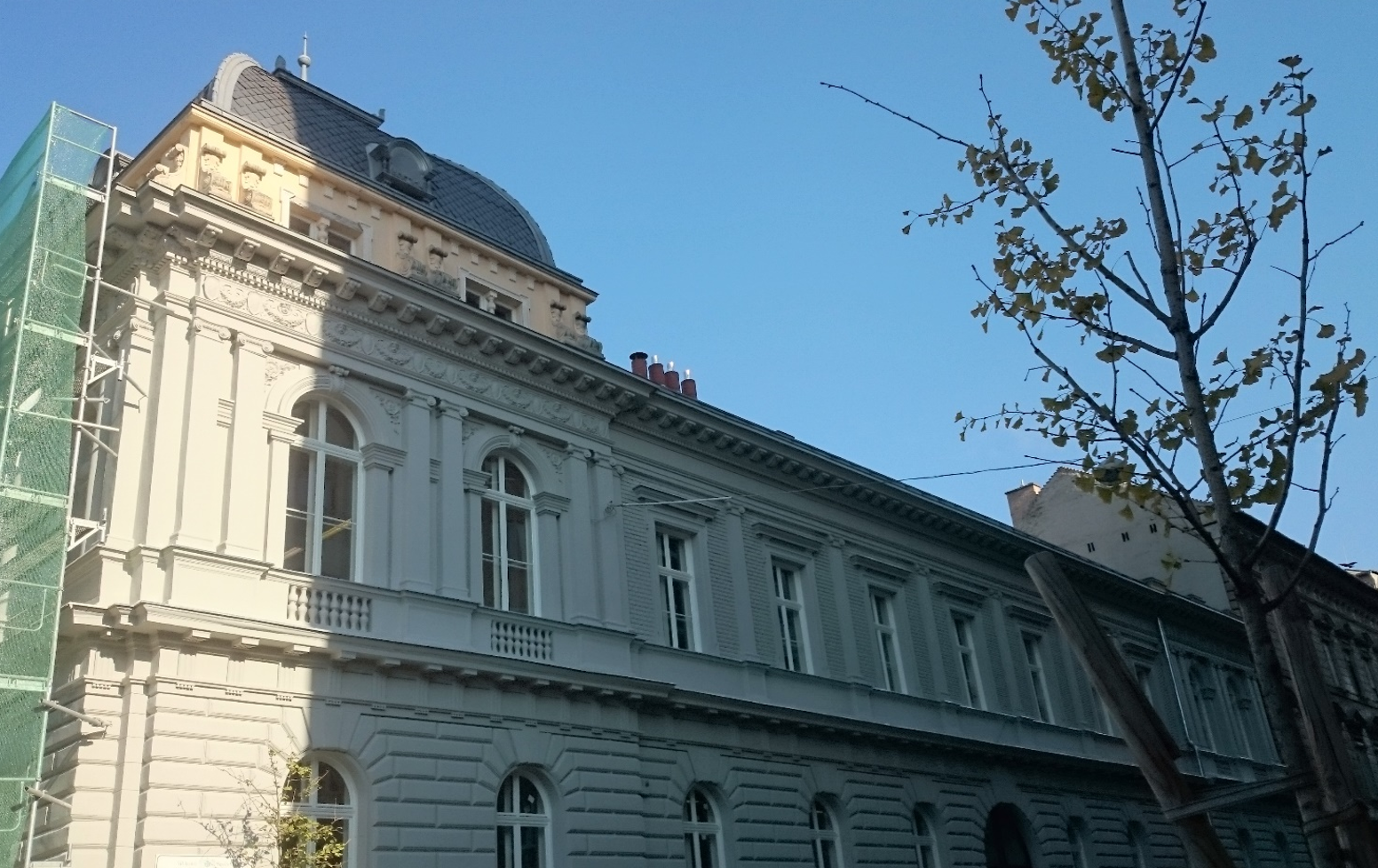
The light of the morning sun greets the still shady Péterfy Sándor Street facade of the building, which was restored this year (Photo: Dávid Mészáros/pestbuda.hu)
The street runs along the southern edge of Rózsák Square, so the Parish Church of St. Elizabeth, built according to the plans of Imre Steindl can be seen.
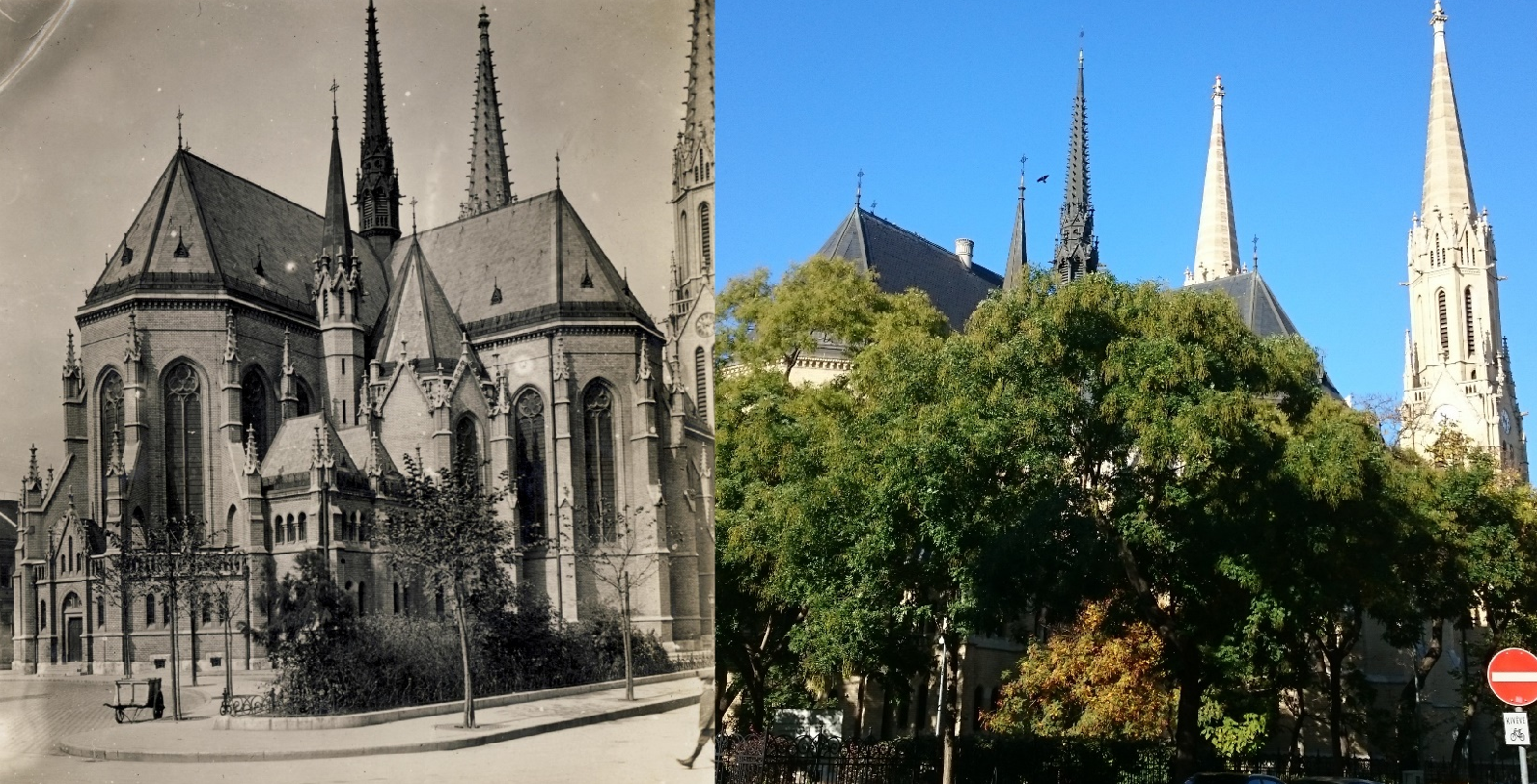
The Parish Church of St. Elizabeth, photographed from the same spot on Péterfy Sándor Street, 87 years apart. In 1935, it was completely visible but today it can be found "wrapped in a green robe" (Left photo source: Fortepan; right photo: Dávid Mészáros/pestbuda.hu)
The line of the street is also embellished by the warehouse building of the former Haggenmacher brewery in the capital. In 1935, in the area purchased by a family of Swiss origin, the houses standing there were given a uniform facade, according to the plans of Ernő Friedmann.
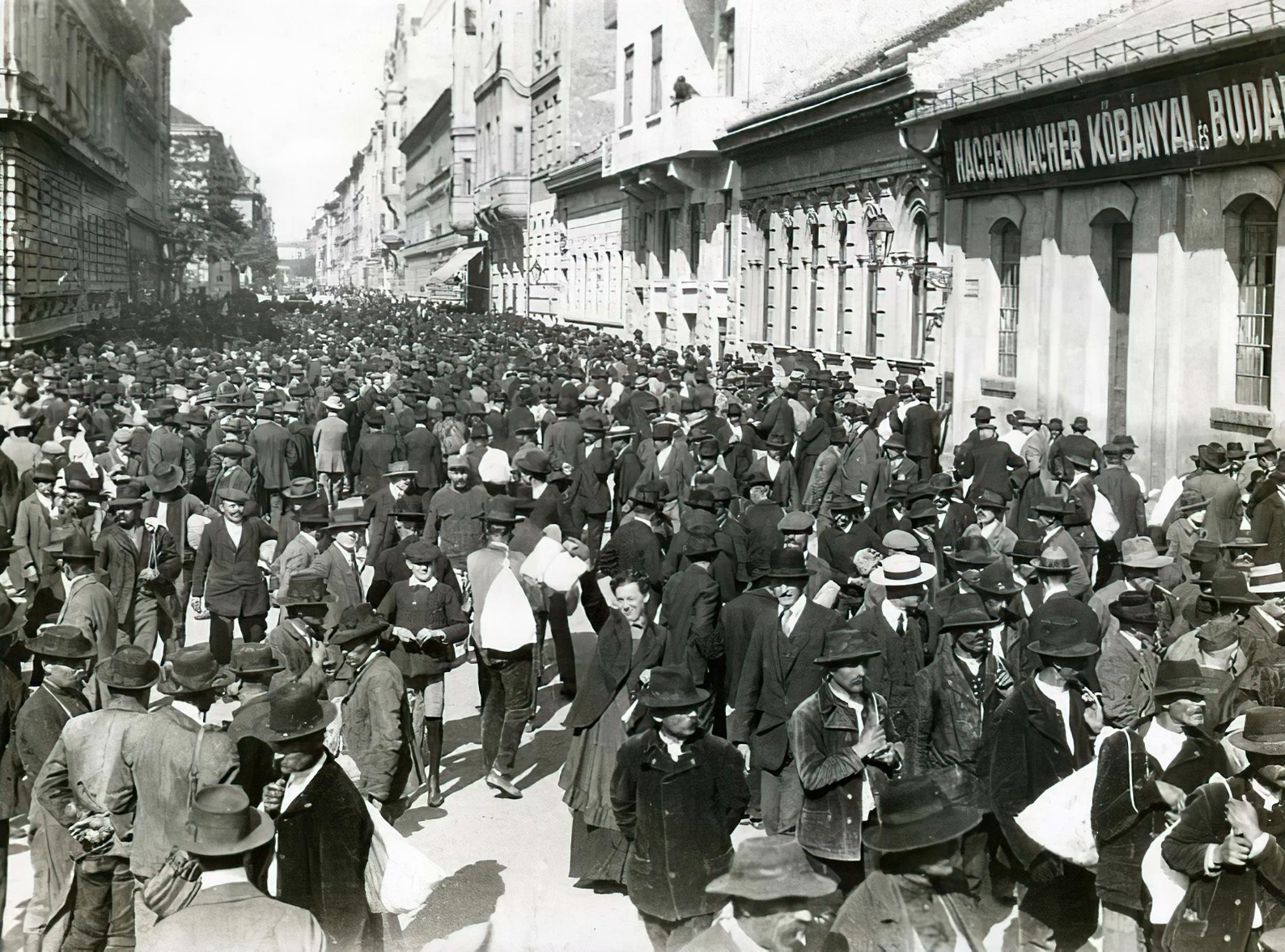
A crowd of people applying for military service in Péterfy Sándor Street on 1 August 1914, at the beginning of World War I. On the right, a small part of the warehouse building of the Haggenmacher Kőbányai and Budafoki Breweries Joint Stock Company. (Source: Fortepan/OSZK)
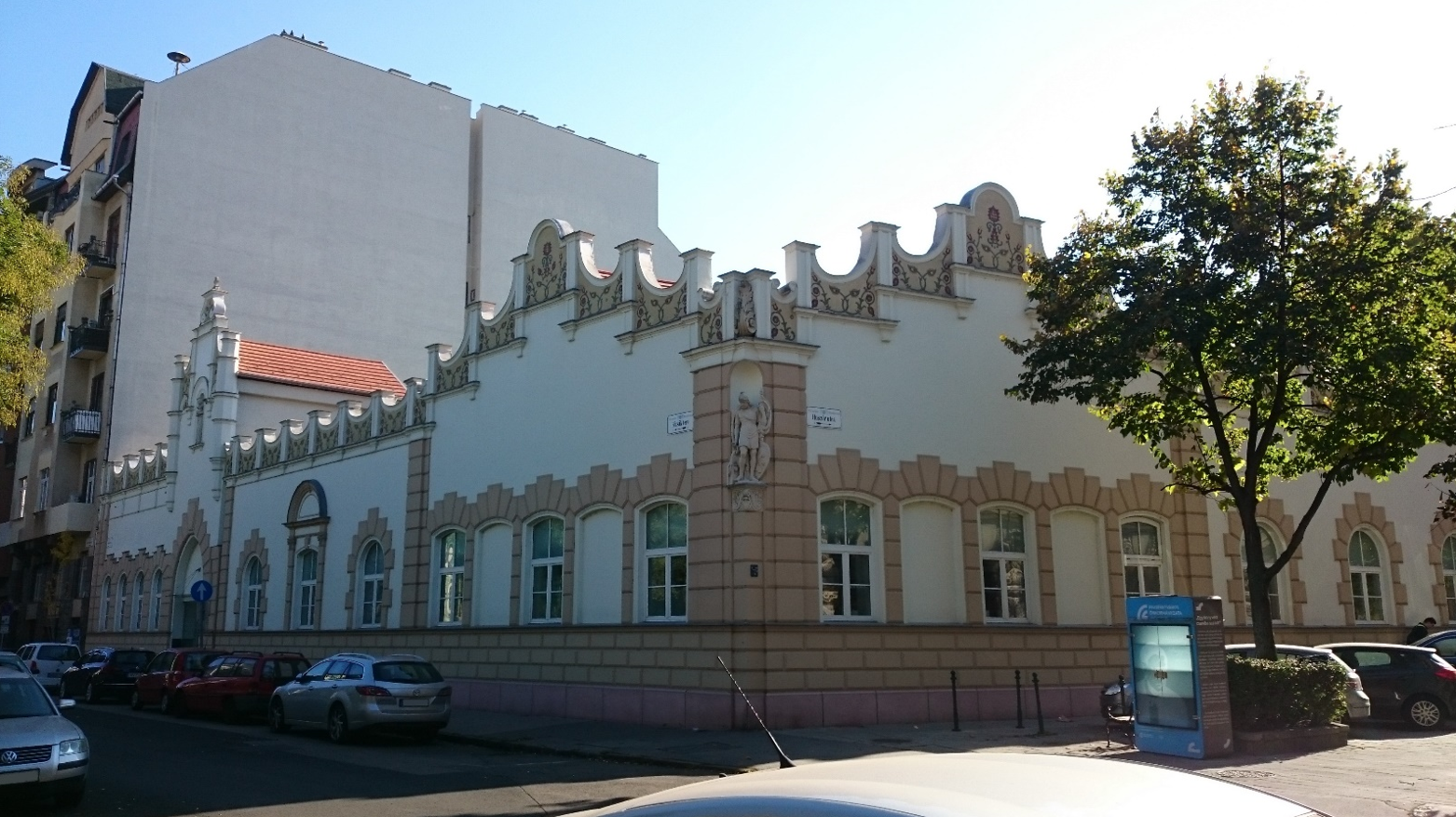
Today, the former brewery warehouse is at the intersection of Péterfy Sándor Street (left) and Huszár Street (right). A statue of Saint Florian, the patron saint of firefighters and brewers, watches over the corner of the building (Photo: Dávid Mészáros/pestbuda.hu)
The western terminus of Péterfy Sándor Street is at the Erzsébet Szegényház [Elizabeth Almshouse] (today Erzsébet Hospital). Its name refers to Franz Joseph's wife, Queen Elizabeth.
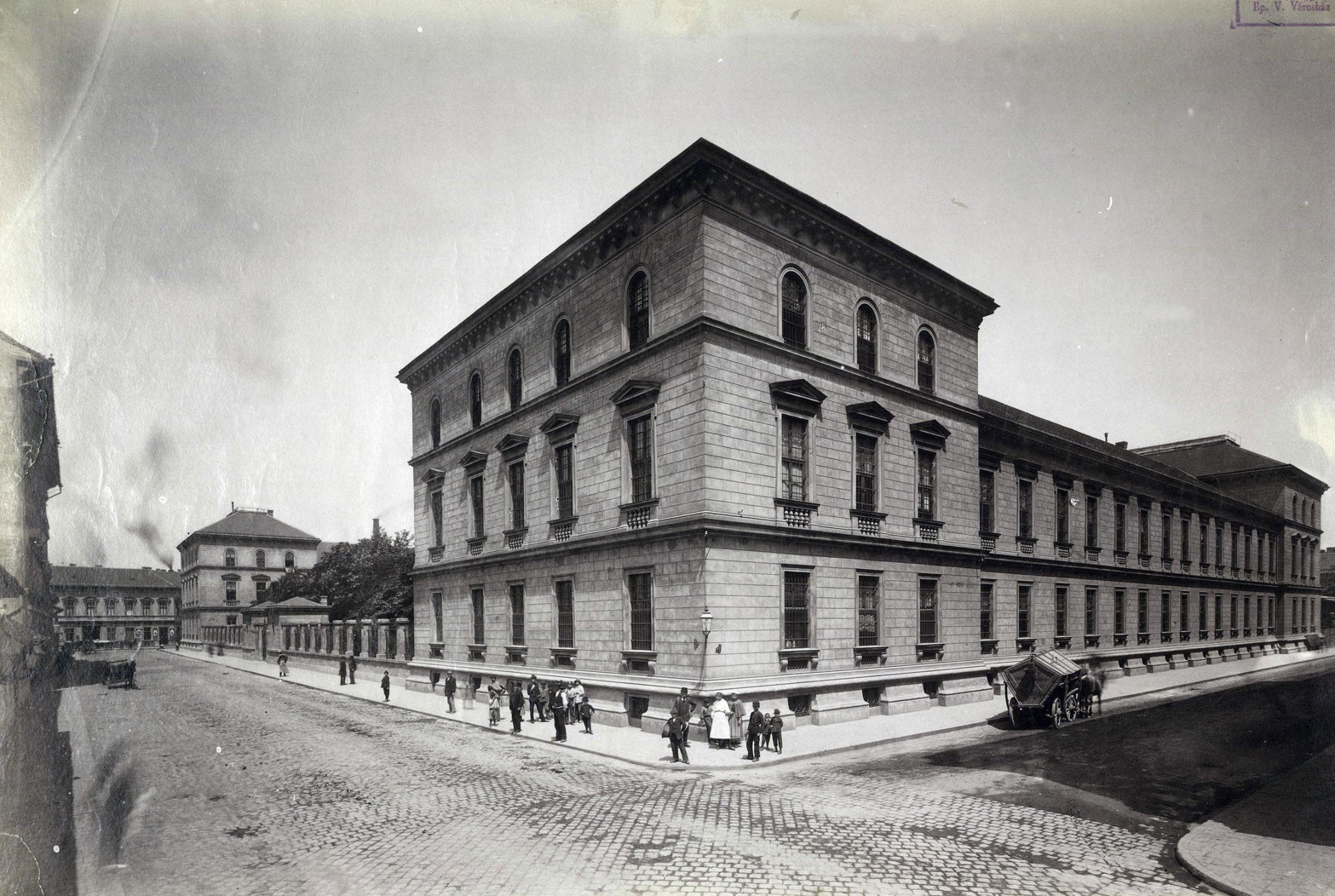
Photo after 1890 of the Elizabeth Almshouse, where Péterfy Sándor Street (right) ends. To the left is Alsó Erdősor Street (Source: Fortepan/Budapest Archives)
The first wing of the almshouse was designed by József Hild and built in 1856. The southern wing along Péterfy is already a later extension of the institution, which today belongs to the Péterfy Hospital.
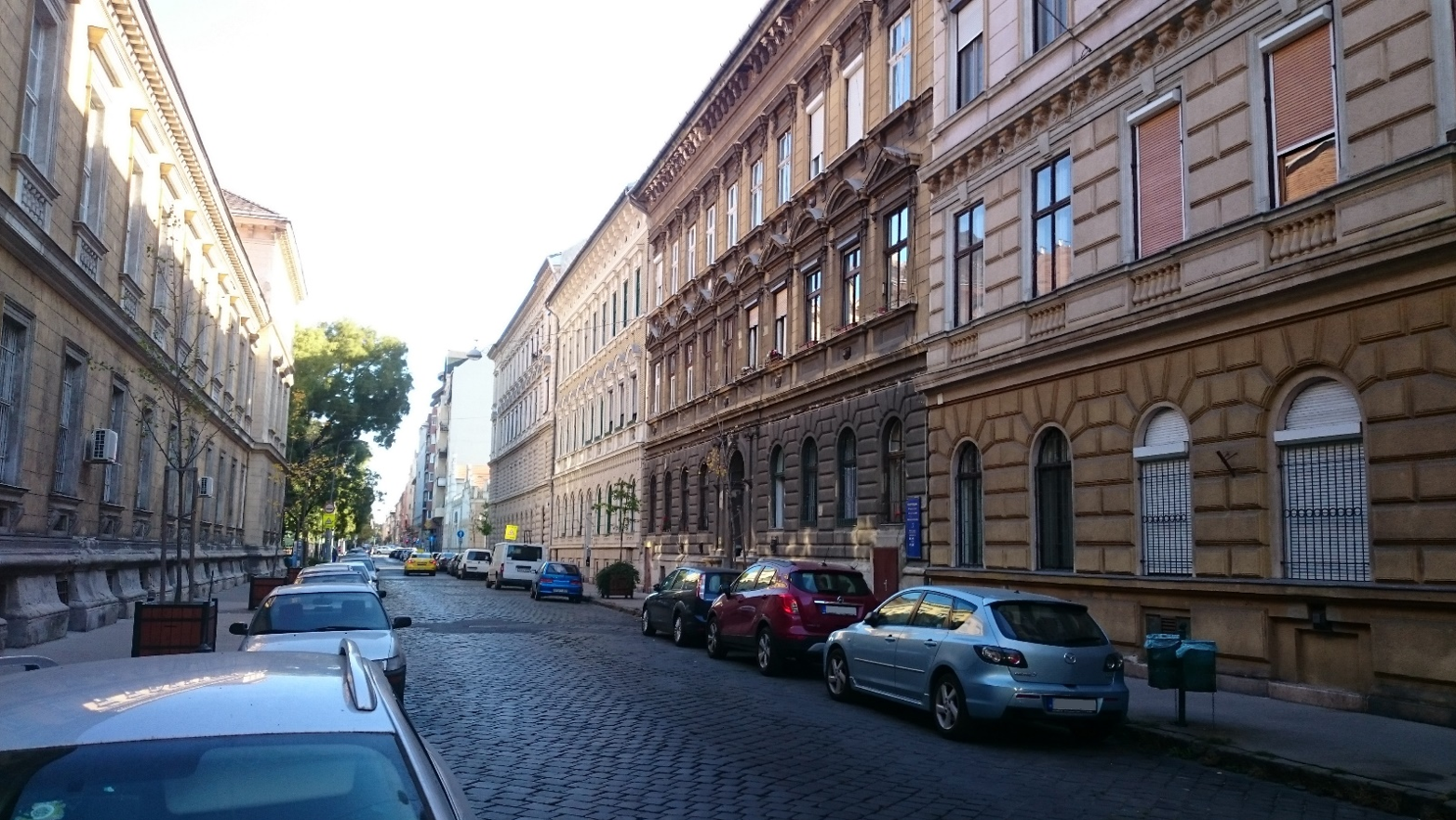
Today, the capital's cobblestone roads have dwindled, but the western end of Péterfy Sándor Street still preserves these memories of the past. To the left is the south wing of today's Erzsébet Hospital (Photo: Dávid Mészáros/pestbuda.hu)
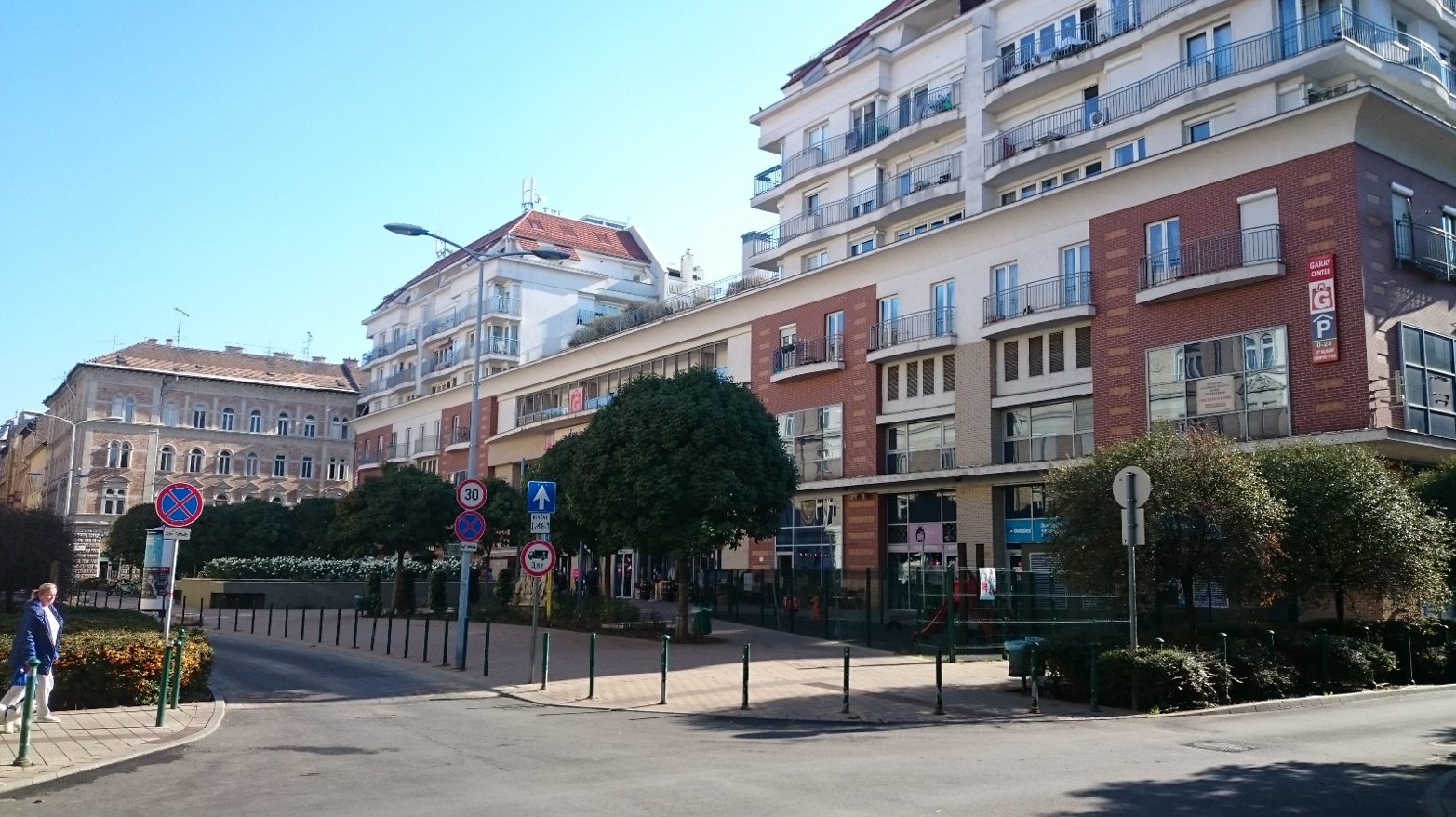
The eastern end of Péterfy Sándor Street is located at Garay Square, which used to be a traditional market square, but today it is the site of a modern indoor market and department store. The square is surrounded by houses from the Dualism era from all directions (Photo: Dávid Mészáros/pestbuda.hu)
Péterfy Sándor Street – like the entire Külső-Erzsébetváros – is an integral part of the turn-of-the-century architectural heritage that makes the Hungarian capital known worldwide. In addition to the buildings in the catchment area of the Danube and Andrássy Avenue, these lesser-known neighbourhoods also deserve similar care and heritage protection.
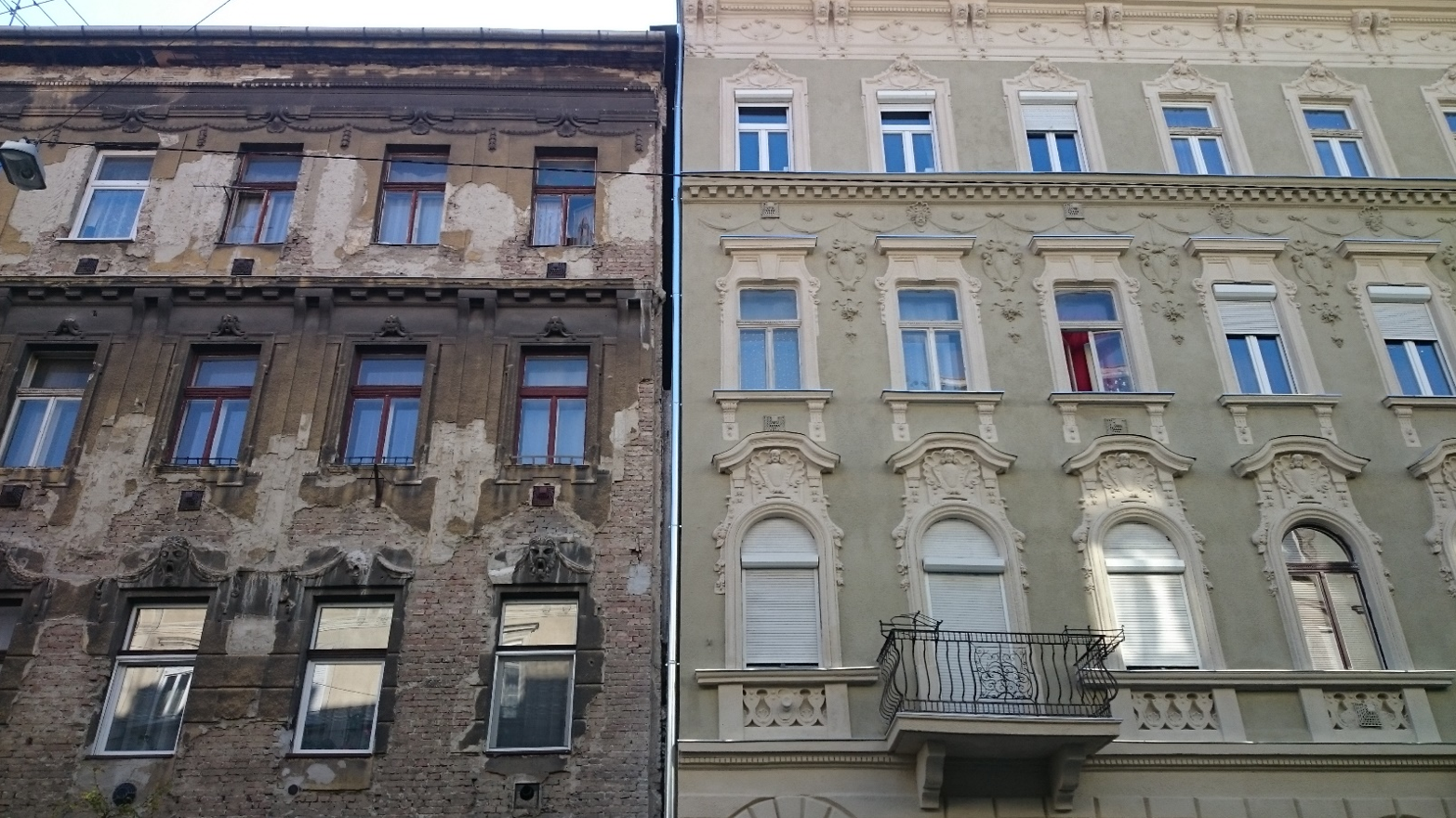
The meeting of a weathered past and an encouraging future: some of the residential buildings on the street have been renovated this year, but there is still much to be done (Photo: Dávid Mészáros/pestbuda.hu)
Cover photo: On the right, Sándor Péterfy's portrait and signature from the 2nd booklet of the Magyar Paedagogiai Szemle of 1880, and on the left, the buildings of the Péterfy Sándor Street hospital from the July 1934 issue of Tér és Forma

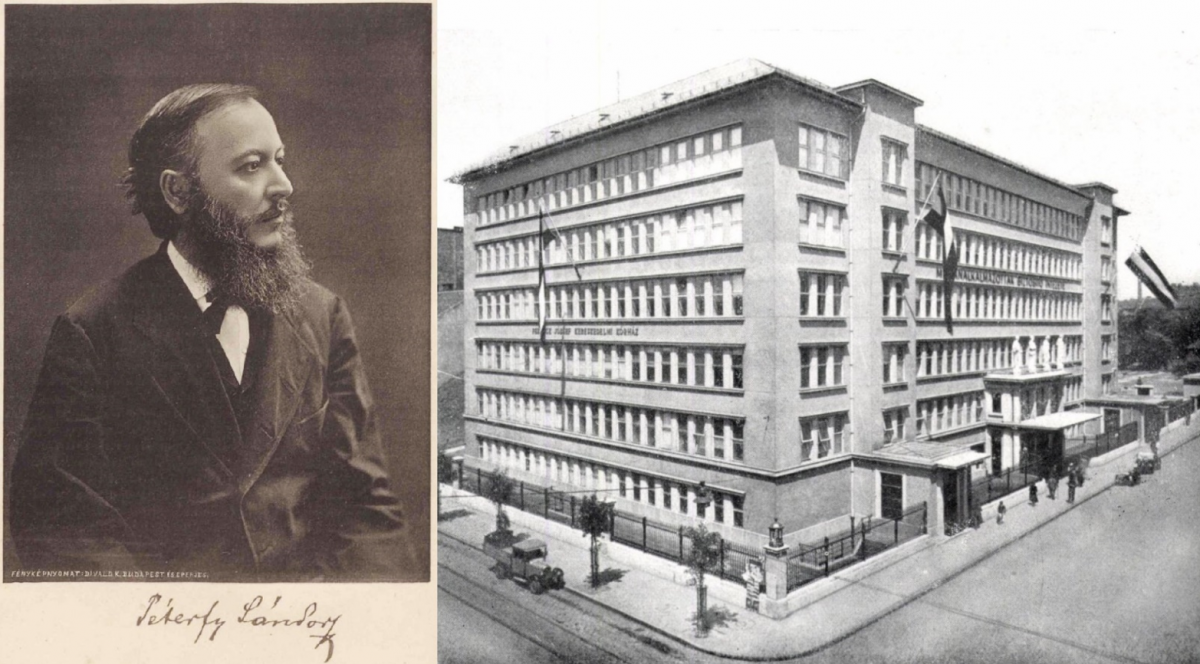
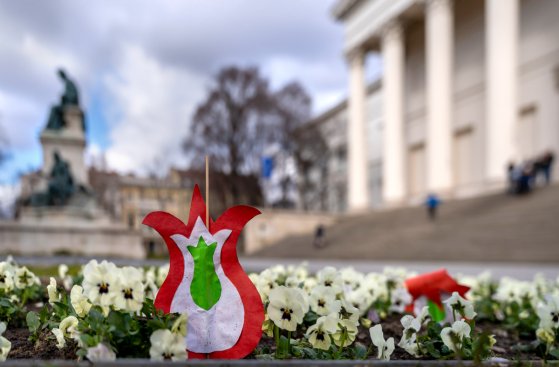

































Hozzászólások
Log in or register to comment!
Login Registration